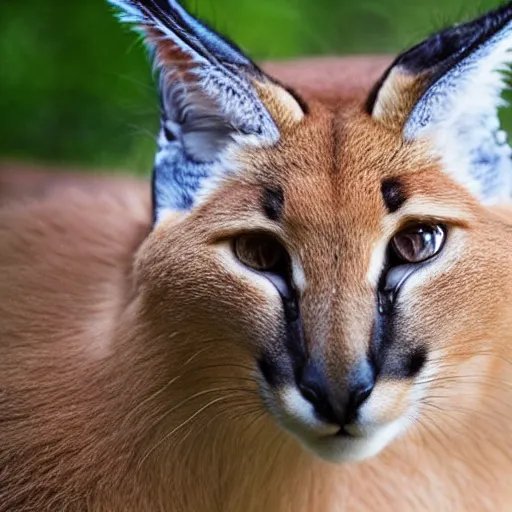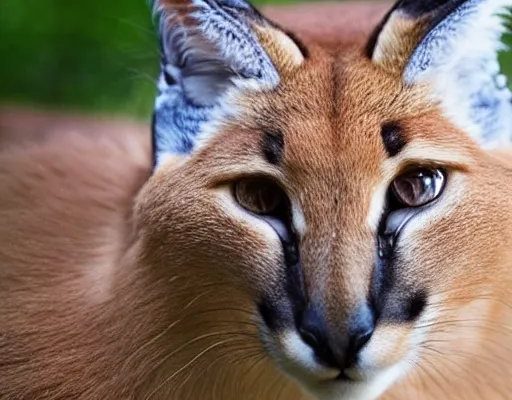
So, what’s the deal with the caracal in cultural narratives? Well, many societies have celebrated this animal, associating it with different meanings and characteristics. You might find it depicted in art, or even in folk tales that demonstrate its cleverness and strength. It’s a bit like how certain flowers symbolize love or friendship. In this case, the caracal symbolizes agility, resourcefulness, and often, untamed beauty.
Caracal in African Folklore
The caracal is deeply rooted in the folklore of many African cultures. In various stories, it’s often portrayed as a cunning and agile creature. For example, some tales describe the caracal’s ability to catch birds mid-flight, showcasing its impressive hunting skills. This capability can symbolize the intelligence and quick thinking that many tribes value.
In some regions, the caracal is associated with trickster figures. Think of it as a clever character that outsmarts its pursuers or rivals. Such stories emphasize that intelligence can be just as powerful as brute strength. For instance, in one tale, a caracal tricks a group of hunters into thinking it is injured, only to escape with a meal. It’s a reminder that sometimes, brains can win over brawn.
These stories often serve a dual purpose. They entertain and educate, passing down wisdom and morals through generations. By highlighting the caracal’s attributes, storytellers encourage traits like resourcefulness and cleverness, qualities that can help people navigate life’s challenges.
Caracal in Middle Eastern Mythology
Moving to the Middle East, the caracal has made its mark in local mythology. It’s often depicted in ancient texts and art, where its sleek image conveys beauty and grace. Ancient Egyptians, in particular, revered many animals, and the caracal was no exception. Often thought to symbolize the divine, it represented a connection between the earth and the heavens.
One popular narrative involves the caracal guiding lost travelers through the unforgiving desert. This story shows the animal as a helpful guide, lending its mystical qualities to assist humans in need. Isn’t it intriguing how creatures like the caracal can evolve into symbols of hope and guidance?
In contrast to the clever trickster persona found in African folklore, Middle Eastern tales often put the caracal in a more noble role. It’s portrayed as a protector, guarding herds from smaller predators. This duality in representation helps illustrate the animal’s versatility and the various meanings it embodies across cultures.
Art and Literature Featuring Caracals
Beyond folklore, caracals have inspired artists and writers throughout history. You might find stunning paintings capturing their beauty in galleries, or read poetry that uses them as a metaphor for grace and agility. In literature, the caracal often symbolizes freedom and wildness, representing the untamed aspect of life.
For example, contemporary writers sometimes use the caracal in stories about resilience and strength when facing challenges. It’s as if the caracal embodies the spirit of those who fight against odds, whether it’s in nature or in life’s struggles. This thematic representation turns the caracal into a powerful figure in narratives, resonating with readers who connect with its story.
Moreover, in art, the portrayal of the caracal often emphasizes its stunning physical features—the tufted ears and the striking gaze—making it a popular subject for photographers and painters alike. These visual representations help bring the animal to life in a way that connects emotionally with viewers.
Caracal Symbolism in Different Cultures
Symbolically, the caracal carries different meanings depending on the culture you look at. In some African tribes, it represents adaptability, capable of thriving in various environments. It reminds us of the importance of flexibility in our own lives. After all, being able to adjust to new situations is vital in our fast-paced world.
In Middle Eastern cultures, however, the caracal often symbolizes protection and courage. The stories of this feline character often emphasize bravery, suggesting that we can all learn to be courageous in our own circumstances. Whether it’s standing up for oneself or protecting loved ones, the caracal serves as a reminder of our inner strength.
Interestingly, the caracal is sometimes compared to the lynx in literary works, highlighting its solitary nature and keen hunting skills. This comparison can add another layer to the symbolic meaning, connecting it to themes of independence and self-reliance.
The Caracal’s Role in Modern Culture
Fast forward to today, and the caracal still finds its place in modern culture. You might see it in documentaries or wildlife shows, showcasing its beauty and grace. People are fascinated by its unique characteristics, leading to a burgeoning interest in conservation. This is essential as many wild cats face threats from habitat loss and hunting.
Additionally, social media brings these stunning creatures to our screens, sparking discussions around wildlife and conservation. Have you ever stumbled across a viral video of a playful caracal? Those clips often humanize the animal, making it relatable and endearing to viewers all over the globe.
This modern representation serves a vital purpose. By drawing attention to the caracal and its habitat, people become more aware of the broader issues facing wildlife. It encourages a sense of responsibility to protect not just the caracal but also the ecosystems it thrives in.
The caracal’s journey through culture and folklore reveals its rich and varied representations. From clever trickster in African tales to noble protector in Middle Eastern mythology, it’s a reminder that animals can symbolize different qualities based on cultural perspectives. This fascinating feline inspires us, encouraging resourcefulness, courage, and adaptability.
As we enjoy the beauty of stories and art that showcase the caracal, it’s essential to remember our role in safeguarding its future. By nurturing a connection to these magnificent creatures, we not only honor their legacy but also enhance our appreciation for the natural world. Let’s be inspired by the caracal, embracing its qualities in our own lives while ensuring this symbol of agility and strength continues to thrive for generations to come.

